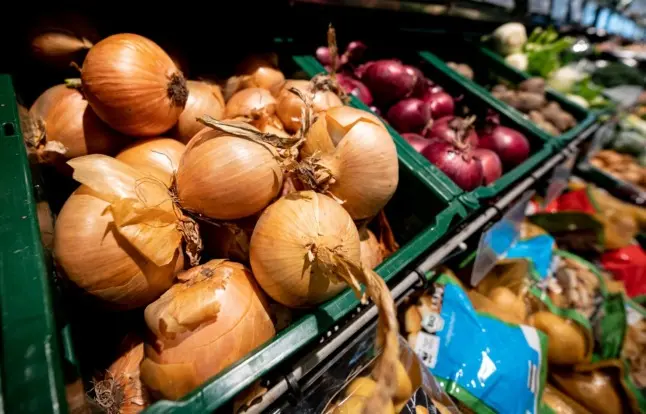The annual inflation rate accelerated for the fourth month in a row, reaching 4.5 percent in October, with energy prices soaring by 18.6 percent, according to first estimates from the federal statistics agency Destatis.
In September, prices had risen in Europe's biggest economy by 4.1 percent year on year.
As The Local has been reporting, residents in Germany are seeing the increase in the rising price of many everyday foods - such as fruit and vegetables - and in the higher costs of petrol, electricity and gas bills.
READ ALSO:
- Why everything in Germany is suddenly getting so expensive
- Where people in Germany are going to find cheaper fuel
Why is inflation rising?
"There are a number of reasons for the high inflation rates since July 2021," the agency said in a statement, citing a temporary reduction in VAT in 2020 and the introduction of CO2 pricing since January 2021.
It also blamed "significant price increases at the upstream economic levels".
Gas prices have surged in Europe in recent months as demand has soared with economies emerging from Covid-induced restrictions.
Official estimates published Wednesday showed the German government expects inflation to rise to three percent in 2021 before subsiding over the next years.
The forecast increase in 2021 overall would be the highest since 1993, when inflation was 4.5 percent.
Inflation would subsequently fall to 2.2 percent in 2022 and 1.7 percent in 2023, the German government predicted.
Supply chain disruptions
The German government introduced a temporary VAT reduction in 2020 to mitigate the impact of Covid-19 lockdowns on the economy, lowering the base against which current price rises are measured.
Jens-Oliver Niklasch, a senior economist at LBBW bank, said this was responsible for "a considerable part" of the price surge.
However, he added: "Does that mean we can sit back and relax? Unfortunately, no.
"The strong increases in import and producer prices lead us to expect that inflation will remain higher next year than in the years before the pandemic."
Rising inflation is just one of a slew of worrying indicators for the German economy in recent months.
Supply chain disruptions and shortages of raw materials, including plastics, metals and paper, have choked off the recovery from the impact of the coronavirus pandemic.
However, there was also good news on Thursday, with official figures showing the unemployment rate fell in October after holding steady in September.
The seasonally adjusted unemployment rate was 5.4 percent in October, according to the BA federal labour agency, with the number of unemployed people falling by 39,000.
"The effects of the coronavirus pandemic are still palpable, but are weaker," BA head Detlef Scheele said in a statement.

Join the conversation in our comments section below. Share your own views and experience and if you have a question or suggestion for our journalists then email us at news@thelocal.de.
Please keep comments civil, constructive and on topic – and make sure to read our terms of use before getting involved.
Please log in here to leave a comment.